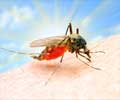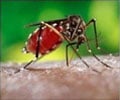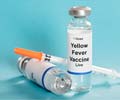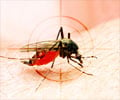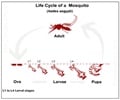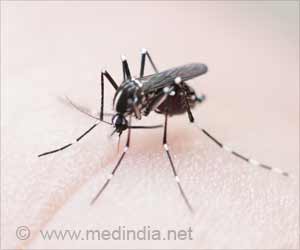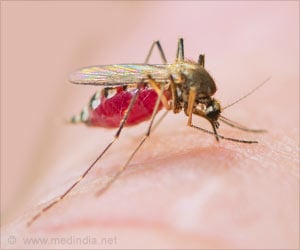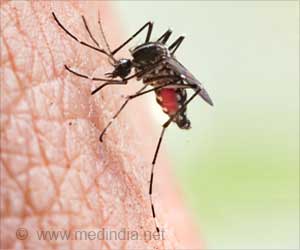Dengue, also known as 'break bone fever' is caused by the dengue virus. It sets in eight days after the mosquito bite. Mortality rate can be reduced to 15%, if timely treatment is provided.
The 'buzz' words today throughout the country are 'Dengue' and 'Chikungunya'. Both these flu-like illnesses, brought on by the bite of an infected Aedes aegypti female mosquito, have set the death bells knolling in several Indian states. Dengue is the most common mosquito-borne viral disease in the world according to WHO. The administrative machinery is battling with a situation that is threatening to go out of hand unless a formidable solution appears on the horizon.
The onset of monsoons in the country has led to a surge of breeding among these mosquitoes, which co exists with humans and share the same milieu. Both Dengue and Chikungunya are common to the tropics and are not contagious.Aedes aegypti mosquitoes, which are the causative vectors of both Dengue fever and Chikungunya, carry the virus that causes these diseases. Please note the following about the Aedes mosquito –
a. It is the female mosquito that feeds on blood as it requires the blood protein to produce its eggs.
b. The female Aedes mosquito searches for suitable places to lay their eggs and it is usually the stagnant water. In Delhi, 90% of these mosquitoes were found rampantly breeding in the water stagnant in coolers.
c. The male mosquitoes usually feed only on plant nectar.
d. Aedes mosquitoes causing dengue and chikungunya usually bite during the day, unlike those that cause malaria, and their biting spree lasts from dawn to dusk.
Advertisement
Dengue, also known as 'break bone fever' is caused by the dengue virus. It sets in eight days after the mosquito bite. Mortality rate can be reduced to 15%, if timely treatment is provided. Dengue fever is sub- typed as Classical and Hemorrhagic.
Advertisement
Chikungunya fever is another highly disabling disease, which has of late taken epidemic proportions. The word 'Chikungunya' which originated from the Swahili word meaning 'that which bends' refers to the stooped, arthritic posture acquired by the affected individual. The Chikungunya virus, also known as the 'buggy creek virus' is transmitted again by the Aedes aegypti mosquito. Symptoms develop within a day or two of biting.
Symptoms of dengue, which appear 8-10 days after the mosquito bite, include severe headache, nausea, vomiting, pain behind the eyes, fever, and development of rashes .The fever usually lasts up to ten days. Chikungunya afflicted individuals suffer from severe pain and swelling of the joints, in addition to nausea, vomiting, infection of the conjunctiva of the eye and fever.
Diagnosis of both Dengue and Chikungunya is possible by carrying out serological tests, using blood samples, which will show the presence of antibodies for the concerned virus, indicating infection.
In the case of Dengue, these antibodies appear approximately 8 days after being bitten and may last up to 1-3 months. This test is carried out as a preliminary tests and boasts of an accuracy of 80-90%. ELISA (Enzyme Linked Immunosorbent Assay) and PCR (Polymerase Chain Reaction) are other tests done that may distinguish Chikungunya from Dengue, but they are complicated and expensive and therefore done selectively.
Managing the disease by treating its symptoms is the only method for both Dengue and Chikungunya. Fever and joint pain may be controlled by the paracetamol group of drugs. Severe cases of Dengue or Chikungunya may require IV fluid infusion. In case of severe bleeding, as in Dengue, blood transfusion may be required. Adequate rest and supportive care is an absolute requirement.
Although no vaccinations are currently available for use, clinical trials have been initiated for a vaccination against Dengue fever. The following are some of the steps that should be taken to prevent these fevers from snowballing into an epidemic:
- Avoid stagnant water around houses to get rid of mosquito breeding sites. Clear water from:
- Flower pots
- Buckets
- Barrels.
- Tyres - especially if used for swings
- Avoid water stagnation for more than 72 hrs as the life cycle of the mosquitoes lasts for 4 - 14 days.
- If water needs to be stored for more than four days consider using larvicidal fish as predator.
- Store water under cover
- Use mosquito nets, also during the day
- Use mosquito repellant creams or coils containing
DEET to avoid mosquito bites
- Use bleaching powder mixed in water if it is not used for drinking.
- Measures should be taken to prevent mosquito breeding in stored water bodies, like wells
- Destroy discarded objects like old tyres, coconut shells and bottles, as they collect and store rain water
- Wear bright and light color clothing, as mosquitoes are attracted to dark clothing.
- Wear long sleeved clothes and long pants.
- Wear boots and socks and if necessary tuck the pants into the socks
- Avoid outdoor activities during dawn or dusk when these mosquitoes are most active
- Avoid strong perfumes as they attract mosquitoes
Source-Medindia
SRM

